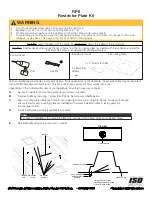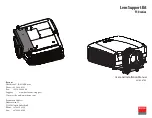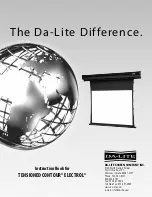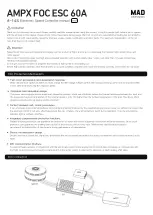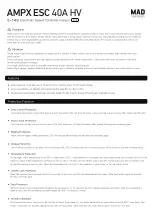
98
User's Guide Fireface 400
© RME
37.8 Noise level in DS / QS Mode
The outstanding signal to noise ratio of the Fireface's AD-converters can be verified even with-
out expensive test equipment, by using record level meters of various software. But when acti-
vating the DS and QS mode, the displayed noise level will rise from -109 dB to -104 dB at 96
kHz, and –82 dB at 192 kHz. This is not a failure. The software measures the noise of the whole
frequency range, at 96 kHz from 0 Hz to 48 kHz (RMS unweighted), at 192 kHz from 0 Hz to 96
kHz.
When limiting the measurement's frequency range to 22 kHz (audio bandpass, weighted) the
value would be -110 dB again. This can be verified even with RME's Windows tool
DIGICheck
.
Although a dBA weighted value does not include such a strong bandwidth limitation as audio
bandpass does, the displayed value of –108 dB is nearly identical to the one at 48 kHz.
The reason for this behaviour is the noise shaping technology of the analog to digital convert-
ers. They move all noise and distortion to the in-audible higher frequency range, above 24 kHz.
That’s how they achieve their outstanding performance and sonic clarity. Therefore the noise is
slightly increased in the ultrasound area. High-frequent noise has a high energy. Add the dou-
bled (quadrupled) bandwidth, and a wideband measurement will show a siginificant drop in
SNR, while the human ear will notice absolutely no change in the audible noise floor.
37.9 SteadyClock
The SteadyClock technology of the Fireface 400 guarantees an excellent performance in all
clock modes. Thanks to a highly efficient jitter suppression, the AD- and DA-conversion always
operates on highest sonic level, being completely independent from the quality of the incoming
clock signal.
SteadyClock has been originally de-
veloped to gain a stable and clean
clock from the heavily jittery MADI data
signal (the embedded MADI clock
suffers from about 80 ns jitter). Using
the Fireface's input signals SPDIF and
ADAT, you'll most probably never ex-
perience such high jitter values. But
SteadyClock is not only ready for
them, it would handle them just on the
fly.
Common interface jitter values in real
world applications are below 10 ns, a
very good value is less than 2 ns.
The screenshot shows an extremely jittery SPDIF signal of about 50 ns jitter (top graph, yellow).
SteadyClock turns this signal into a clock with less than 2 ns jitter (lower graph, blue). The sig-
nal processed by SteadyClock is of course not only used internally, but also used to clock the
digital outputs. Therefore the refreshed and jitter-cleaned signal can be used as reference clock
without hesitation.
Summary of Contents for Fireface 400
Page 5: ...User s Guide Fireface 400 RME 5 User s Guide Fireface 400 General ...
Page 12: ...12 User s Guide Fireface 400 RME ...
Page 13: ...User s Guide Fireface 400 RME 13 User s Guide Fireface 400 Installation and Operation Windows ...
Page 63: ...User s Guide Fireface 400 RME 63 ...
Page 86: ...86 User s Guide Fireface 400 RME ...
Page 87: ...User s Guide Fireface 400 RME 87 User s Guide Fireface 400 Technical Reference ...
Page 99: ...User s Guide Fireface 400 RME 99 38 Diagrams 38 1 Block Diagram Fireface 400 ...





















